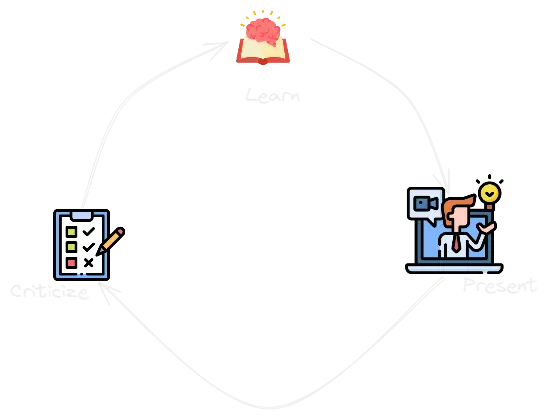Feynman Technique
Notes
the best way to learn is to teach learning by doing. the technique has 3 stages:
- Learn - implement your favorite learning technique, could be using video, personal project, taking notes.
- Present - Make a video/article/presentation for someone who has no knowledge in this topic. “If you can't explain it to a six year old, you don't understand it yourself.” - Albert Einstein. Simplicity
- Critique - reread/watch what you made, look for 3 things:
- Factual mistakes - things you said incorrectly
- Unclear material - something that would have confused the listener, that they wouldn't understand
- Follow-up questions: what does that make you think about? what might listeners ask about?
The beauty and simplicity of this technique has many layers. First of all, when we are forced to try and implement what we study, and pass it on to others, we are more enaged with the material, so we learn better. We know that now the stakes are much higher. To learn incorrectly can result in an embarassing experience when reality would hit us in the face when we will see how little we know. It is one of the best types of Feedback we can get.
Also, it encourages us to step beyond our own Perspective. To see the world through the eyes of a beginner. To think about what they know, and how to transfer the knowledge to them. It is not easy to do because We can't read minds, but it does improve our mindsight capabilities. We see the gaps in our knowledge, and we understand others better.
It encourages us to distill large quantities of knowledge into a simple and clear message.
Aside from having better knowledge in the specific area we are trying to teach, it turns us into better learners in general, and improves our skill at learning. We are more aware of the importance of Mental Shortcuts and how to recreate them for people who think differently.
This technique is perhaps the hardest of them all, but learning should be hard.
Visual

Overview
🔼Topic:: Learning (MOC) 🔼Topic:: Presentations (MOC) ◀Origin:: Thomas Frank 🔗Link:: Source